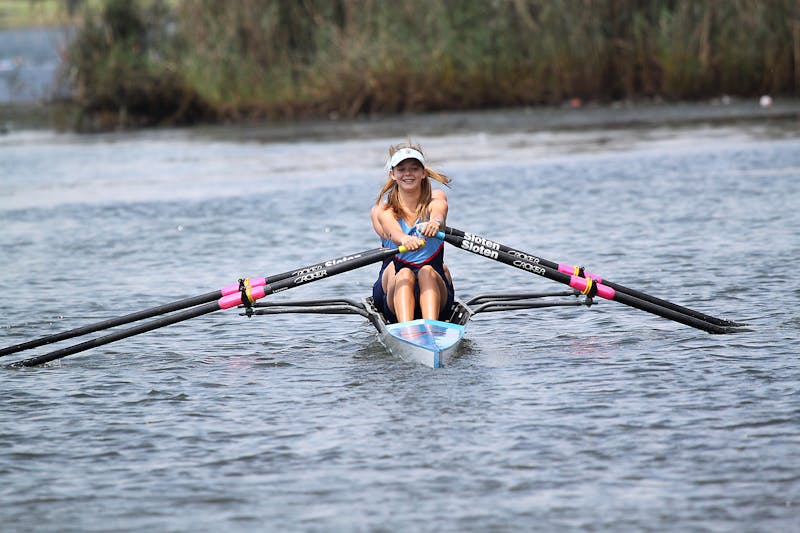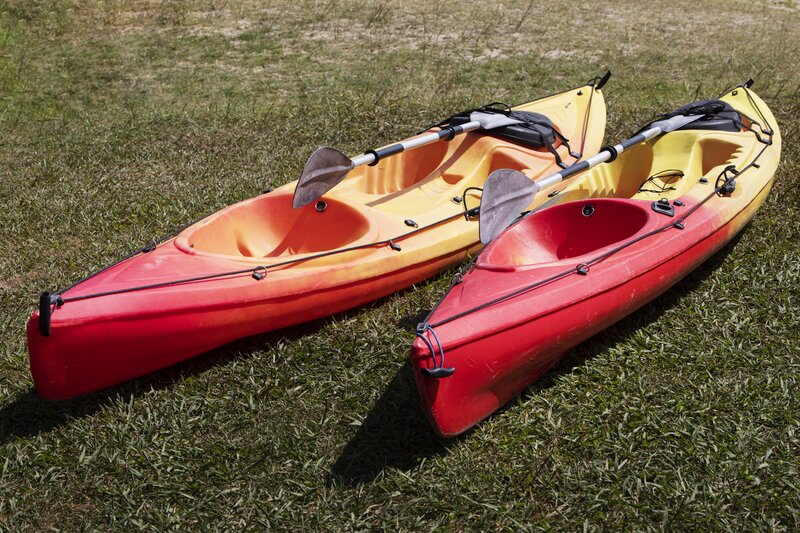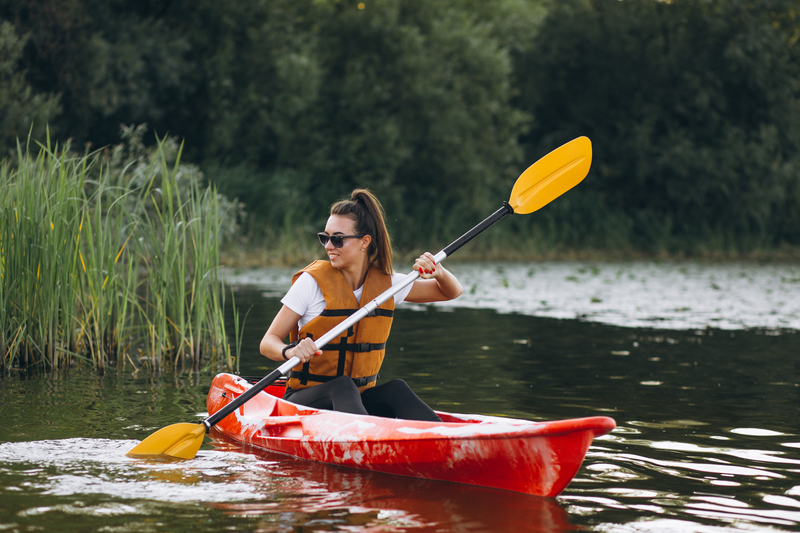Hook: Have you ever been on your way to a picturesque kayaking spot, only to feel that dreadful wobble from the roof of your car? It happened to me once, and let me tell you, it was a heart-stopping moment. My kayak, not properly secured, was shifting dangerously, threatening to ruin both my trip and my kayak. That’s when I realized how crucial it is to know how to tie down a kayak securely.
Importance of Properly Tying Down a Kayak: Ensuring your kayak is properly tied down isn’t just about avoiding that unnerving wobble. It’s about safety—yours, your kayak’s, and everyone else’s on the road. A poorly secured kayak can lead to accidents, damage to your vehicle, and harm to others. Plus, knowing your kayak is firmly in place gives you peace of mind, allowing you to enjoy the journey as much as the destination.
Overview: In this guide, we’ll dive into how to tie down a kayak with expert tips that ensure a secure and hassle-free transport. We’ll start by understanding the basics, move on to essential equipment, and provide a step-by-step guide to make sure you’re doing it right. Along the way, we’ll share expert insights and troubleshooting advice to handle any issues that might arise.

Understanding the Basics of How to Tie Down a Kayak
What Does “Tying Down a Kayak” Mean? Tying down a kayak involves securing it to your vehicle in such a way that it remains stable and safe during transport. This typically includes using straps, ropes, and roof rack systems to hold the kayak firmly in place.
Why It’s Important
- Safety for You and Others: An unsecured kayak can become a dangerous projectile on the road, risking serious accidents.
- Preventing Damage: Properly tying down your kayak protects it from shifting, which can cause scratches, dents, or even more severe damage. It also prevents damage to your vehicle, especially the roof and paintwork.
Common Mistakes to Avoid
- Loose Straps: Make sure your straps are tight and secure. Loose straps can lead to the kayak shifting or even falling off the vehicle.
- Using the Wrong Type of Tie-Downs: Not all tie-downs are created equal. Using the wrong ones can be ineffective and unsafe.
- Improper Positioning: Position your kayak correctly on the roof rack to ensure balance and stability.
Ready to dive deeper? Let’s move on to the next crucial part of our guide: Essential Equipment. Understanding and having the right gear is the first step to mastering how to tie down a kayak securely.
Essential Equipment for Tieing Down a Kayak
To master how to tie down a kayak effectively, having the right equipment is crucial. Let’s dive into the essentials you’ll need for a secure and safe kayak transport.
Ratchet Straps vs. Cam Straps
Ratchet Straps:
- Pros: These provide a very tight and secure hold, ideal for longer trips or heavier kayaks. The ratcheting mechanism allows you to achieve maximum tension.
- Cons: They can be over-tightened, potentially damaging your kayak. They are also a bit more complex to use compared to cam straps.
Cam Straps:
- Pros: These are easy to use and adjust, making them a favorite among kayakers. They are less likely to cause damage since you manually pull them tight.
- Cons: They may not provide as tight a hold as ratchet straps, which can be a downside for very long trips or rough roads.
Bow and Stern Lines
Adding bow and stern lines provides extra security, ensuring your kayak doesn’t shift forward or backward during transport. These lines attach the front (bow) and rear (stern) of your kayak to your vehicle, stabilizing it further.
Roof Rack Systems
Types of Roof Racks:
- Factory-Installed: These are built into your vehicle and are often designed for general use, not specifically for kayaks.
- Aftermarket: These racks are designed for various uses, including kayaking, and can be more versatile and robust.
- Custom Solutions: Tailored specifically for your vehicle and kayak, these provide the best fit and security but can be more expensive.
Foam Blocks or Pads
Foam blocks or pads are essential for protecting both your kayak and your vehicle. They cushion the kayak, preventing scratches and dents on both surfaces. They also help stabilize the kayak, reducing movement during transport.
Additional Accessories
- Hitch-Mounted Racks: Great for vehicles without roof racks or for transporting multiple kayaks. These racks mount to the hitch of your vehicle.
- Kayak Cradles: Designed to hold the kayak securely in place, these are used in conjunction with roof racks.
- Tie-Down Anchors: These provide additional points to secure your kayak, enhancing overall stability.
Preparing Your Kayak and Vehicle
Before you even think about strapping down your kayak, a bit of preparation goes a long way. Here’s how to get everything ready.
Inspecting Your Kayak
Check your kayak for any damages or weak points. Look for cracks, deep scratches, or loose parts that could worsen during transport. Fixing these issues before hitting the road ensures your kayak stays in good condition.
Choosing the Right Vehicle
Not all vehicles are created equal for kayak transport. SUVs, trucks, and cars with roof racks are generally the best options. If you have a smaller car, consider whether it can handle the size and weight of your kayak.
Positioning the Kayak on Your Vehicle
Proper positioning is key. Center the kayak on the roof rack to ensure even weight distribution. Make sure it’s aligned with the vehicle’s centerline to reduce wind resistance and improve stability.
Using a Kayak Cart or Dolly
A kayak cart or dolly can make loading and unloading your kayak much easier, especially if you’re doing it alone. These tools help you move the kayak from your storage spot to the vehicle without straining yourself.
Up next: The most crucial part – a detailed, step-by-step guide on how to tie down a kayak securely. Get ready to become an expert in no time!

Step-by-Step Guide to Tying Down a Kayak
Getting your kayak securely tied down can seem daunting, but with a clear step-by-step process, you’ll become a pro in no time. Here’s your ultimate guide on how to tie down a kayak safely and effectively.
Step 1: Positioning the Kayak on the Roof Rack
Start by lifting your kayak onto the roof rack. Center it over the vehicle to ensure even weight distribution. Make sure the kayak is aligned with the vehicle’s centerline, which will help reduce wind resistance and improve stability during transport.
Step 2: Securing the Hull with Straps
Using cam or ratchet straps, loop the strap over the kayak and secure it to the roof rack. If you’re using cam straps, pull them tight without over-tightening to avoid damaging the kayak. For ratchet straps, be cautious not to over-ratchet. The goal is to secure the kayak firmly without causing dents or cracks.
Step 3: Attaching Bow and Stern Lines
Attach bow and stern lines to the front and back of your kayak. Find secure attachment points on both the vehicle and kayak. These lines add an extra layer of security by preventing forward and backward movement. Make sure they are tight but not overly so, to avoid putting too much pressure on the kayak’s structure.
Step 4: Double-Checking Everything
Before hitting the road, double-check all your straps and lines. Ensure they are tight and secure. Give your kayak a gentle shake to test for any movement. If everything feels solid, you’re good to go. For a final inspection, make sure there are no twists in the straps, and all buckles are properly fastened.
Expert Tips for a Secure Tie-Down
Even when you know how to tie down a kayak, a few extra tips can make your setup even more secure and travel-friendly.
Using Extra Straps for Added Security
Adding extra straps can provide additional peace of mind. Use them to secure the kayak at multiple points, especially if you’re traveling long distances or on rough roads.
Avoiding Wind Resistance
Minimize wind resistance by ensuring all straps are flat against the kayak and vehicle. Tuck away any loose ends to prevent them from flapping in the wind, which can cause noise and drag.
Protecting Your Vehicle’s Paint
Place protective pads or towels under the straps and where the kayak contacts the vehicle to prevent scratches. This simple step can save your car’s paint job from damage.
Checking Straps During Long Drives
If you’re going on a long trip, plan to stop occasionally to check and tighten the straps. Changes in weather and road conditions can loosen them, so regular checks are a good practice.
Weather Considerations
Adjust your tie-downs based on the weather. In rainy conditions, ensure all straps are waterproof to avoid slippage. For high winds, double-check all attachments to ensure they are as tight as possible without over-tightening.
Troubleshooting Common Issues
Even when you follow the best practices on how to tie down a kayak, you might encounter some common issues. Here’s how to address them.
Loose Straps
Loose straps can result from not tightening them enough initially or from road vibrations. Re-tighten them as needed and consider using additional straps for extra security.
Noise and Vibration
Flapping straps can create noise and vibration, which can be annoying and indicate a less secure tie-down. Tuck away loose ends and use twist ties or bungee cords to secure them.
Kayak Shifting During Transport
If your kayak shifts, it might be due to an uneven load or loose straps. Ensure the kayak is centered and straps are tight. Adding more straps can also help prevent movement.
Damage to Kayak or Vehicle
Inspect your kayak and vehicle for any signs of damage regularly. Address any scratches or dents immediately to prevent further issues. Using foam pads or towels can help minimize the risk of damage.
Ready to explore more options? Next up, we’ll look at Alternative Transport Methods to give you even more flexibility in how you transport your kayak. Stay tuned!

Alternative Transport Methods
While learning how to tie down a kayak is essential, you might find alternative transport methods more suitable for your needs. Let’s explore some popular options.
Trailer Options
Benefits of Using a Kayak Trailer:
- Ease of Loading and Unloading: Trailers are lower to the ground, making it easier to load and unload your kayak without straining yourself.
- More Storage Space: Trailers often have room for multiple kayaks and additional gear, perfect for group trips or longer adventures.
- Versatility: You can use a kayak trailer for other activities, such as transporting bikes or camping equipment.
Considerations:
- Cost: Trailers can be an investment, so consider your budget and how often you’ll use it.
- Storage: Ensure you have a place to store the trailer when not in use.
- Driving Experience: Towing a trailer requires some practice and familiarity with how it affects your vehicle’s handling and braking.
Truck Bed Transport
Transporting a kayak in a truck bed can be convenient, but it requires proper techniques to ensure safety and security.
Tips for Safely Transporting a Kayak in a Truck Bed:
- Use a Bed Extender: This provides extra length, supporting the kayak and preventing it from hanging out too far.
- Secure with Straps: Use cam or ratchet straps to secure the kayak to the truck bed’s anchor points. Make sure the kayak is centered and balanced.
- Flag the Overhang: If the kayak extends beyond the truck bed, attach a red flag to the end to alert other drivers.
DIY Solutions
If you’re on a budget or enjoy DIY projects, there are creative ways to tie down your kayak without breaking the bank.
Creative and Budget-Friendly Tie-Down Methods:
- Pool Noodles: Use pool noodles as padding to protect both your kayak and vehicle. Secure them with strong rope or bungee cords.
- Homemade Racks: Build your own roof rack using PVC pipes or wood. Ensure it’s sturdy and securely attached to your vehicle.
- Rope and Knots: Learn some basic knot-tying techniques to secure your kayak using rope. The trucker’s hitch is particularly useful for this purpose.
Safety Tips and Legal Considerations
Understanding the safety aspects and legal requirements of transporting your kayak is crucial for a hassle-free trip.
Understanding Local Laws and Regulations
Different regions have specific laws regarding the transportation of large items like kayaks. Research local regulations to ensure you’re compliant. This may include requirements for red flags on overhanging loads or limits on how far an object can extend beyond your vehicle.
Driving with a Kayak on Your Roof
Safe Driving Practices:
- Moderate Speed: Drive at moderate speeds to reduce wind resistance and strain on the straps and kayak.
- Avoid Sudden Movements: Sudden stops or sharp turns can shift the kayak, even if it’s well-secured.
- Regular Checks: Stop periodically to check the straps and adjust as necessary.
Speed Recommendations:
- Stick to speed limits, but generally, staying around 55-65 mph is safer when transporting a kayak on your roof.
Emergency Situations
What to Do if Your Kayak Becomes Loose:
- Pull Over Safely: Find a safe place to stop and secure your kayak.
- Assess Damage: Check for any damage to your kayak or vehicle.
- Re-Tighten Straps: Ensure all straps are secure before continuing your journey.
Final Checks Before Hitting the Road
Before setting off, a final inspection can save you from potential issues on the road.
The Last Inspection
Comprehensive Checklist:
- Straps: Ensure all straps are tight and secure, with no fraying or damage.
- Padding: Check that all padding is in place and protecting your vehicle and kayak.
- Bow and Stern Lines: Make sure they are securely attached and not overly tight.
What to Pack
Essential Items for the Road:
- Extra Straps: In case you need to replace any during the trip.
- Protective Pads: Spare pads to prevent scratches and damage.
- Toolkit: Basic tools for any adjustments or repairs.
- Emergency Kit: First aid, flashlight, and roadside assistance tools.
Conclusion
We’ve covered the essential steps on how to tie down a kayak, from choosing the right equipment to securing your kayak and ensuring a safe journey.
Like any skill, tying down a kayak gets easier with practice. Don’t be discouraged if it takes a few tries to get it perfect.
Have any tips or experiences of your own? Share them in the comments below! We’d love to hear your stories and any additional advice you might have.
Check out the other posts by kayaking experts:
15 Perfect Kayak Launch Ideas To Start Paddling Instantly!
13 Best Kayak Storage Ideas Outside The Home
FAQs: How to Tie Down a Kayak – Expert Tips
What is the best way to tie down a kayak?
To securely tie down a kayak, use cam straps or ratchet straps for the hull, and bow and stern lines for added stability. Position the kayak centrally on the roof rack, tighten the straps without over-tightening, and double-check everything before driving.
How do you use ratchet straps to secure a kayak?
Place the kayak on the roof rack, loop the ratchet straps over the kayak and through the rack, then tighten the ratchet mechanism until the kayak is secure but not over-tightened. Attach bow and stern lines for extra security.
Are cam straps better than ratchet straps for tying down a kayak?
Cam straps are often preferred because they are easier to use and less likely to over-tighten and damage the kayak. Ratchet straps provide a tighter hold but require more careful use to avoid over-tightening.
Do I need bow and stern lines when transporting my kayak?
Yes, bow and stern lines add extra security by preventing forward and backward movement of the kayak, ensuring it remains stable during transport.
Can I transport a kayak without a roof rack?
Yes, you can use foam blocks or pads on the roof of your vehicle and secure the kayak with straps. However, using a roof rack is generally safer and more stable.
How do I prevent my kayak from scratching my car’s roof?
Use foam blocks, pads, or towels between the kayak and the roof to protect your vehicle’s paint. Ensure straps do not have sharp edges that could cause scratches.
What should I check before driving with a kayak on my roof?
Ensure all straps and lines are tight and secure, the kayak is centered and balanced, and there are no loose ends flapping. Do a final inspection by gently shaking the kayak to check for movement.
How do I secure a kayak in a truck bed?
Use a bed extender to support the kayak if it extends beyond the truck bed. Secure the kayak with cam or ratchet straps to the truck’s anchor points and use a red flag on the overhang for visibility.
What are the common mistakes to avoid when tying down a kayak?
Avoid loose straps, using the wrong type of tie-downs, improper positioning of the kayak, and not using bow and stern lines for extra stability.
Can I use rope instead of straps to tie down my kayak?
While you can use rope, straps are generally more secure and easier to use. If using rope, ensure you know proper knot-tying techniques, such as the trucker’s hitch, to achieve a secure hold.
How often should I check the straps during a long trip?
Check the straps and lines periodically, especially after the first few miles and during rest stops. Weather changes and road vibrations can loosen straps, so regular checks are important.
What type of roof rack is best for transporting a kayak?
Aftermarket roof racks designed specifically for kayaks or custom solutions provide the best fit and security. Factory-installed racks can work but may not be as sturdy or versatile.
How do I minimize wind resistance when transporting a kayak?
Ensure all straps are flat against the kayak and vehicle, tuck away any loose ends, and position the kayak so it aligns with the vehicle’s centerline to reduce wind resistance and drag.
Is it safe to transport a kayak in the rain?
Yes, but ensure your straps are waterproof and tight. Wet straps can become slippery, so check and re-tighten them as needed. Protect the kayak and vehicle from water damage with additional padding if necessary.
What should I do if my kayak becomes loose during transport?
Safely pull over, re-secure the kayak, and check all straps and lines for damage. Address any issues before continuing your journey to prevent accidents and further damage.
Views: 2


